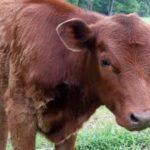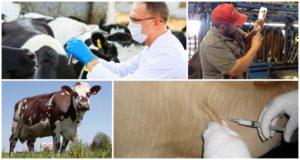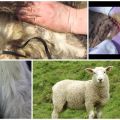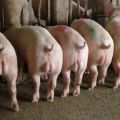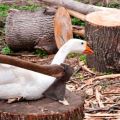Top 4 ways to castrate bulls and at what age to carry out
Castration of bulls with rubber rings or other methods has a number of features. They must be taken into account when choosing the method of operation. It is important to consult your veterinarian when doing this. For the procedure to be successful, it is worth strictly observing the technique of its implementation. Caring for the animal after the completion of castration is also important.
Why castrate bulls
Before performing castration, it is worth analyzing all the advantages and disadvantages of this procedure. This operation affects the structure of the bulls' torso, but does not provide a large difference in weight. The main difference is the quality of the meat. In bulls that have been castrated, it is more fatty and high in calories. When grown for meat, this feature should certainly be taken into account. If you plan to get lean beef, and slaughter is planned at the age of 18-20 months, you should not perform the procedure.
Another purpose of castration is considered to be behavior correction. When raising a bull on an individual farm and keeping in a stall, there is no particular need for castration. At the same time, after the procedure, the bulls become calmer and cannot fertilize cows. This is important when keeping large livestock. The meat obtained after the slaughter of such animals has excellent taste. In industrial animal husbandry, castration is considered one of the methods to increase profitability.
Contraindications to the procedure
Before carrying out the operation, it is worth analyzing the condition of the animals, establishing the degree of development of the testicles and their location. It is forbidden to castrate sick, emaciated, weakened males. Also contraindications include too young or very mature age.
Castration methods
There are quite a few methods of castration, each of which has certain pros and cons.
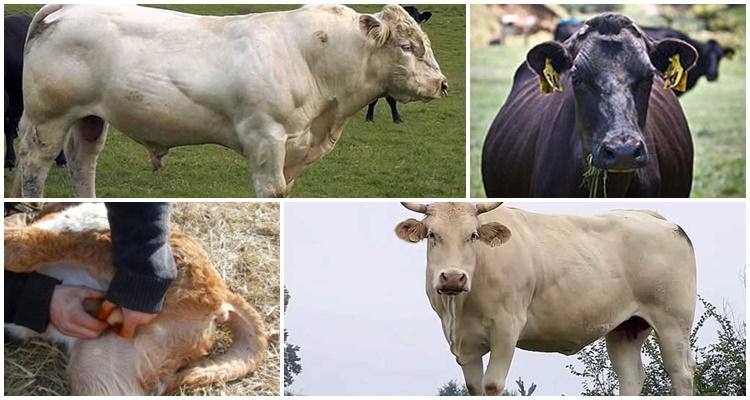
Ligature technique
To carry out the procedure, you should do the following:
- put the bull on its left side and fix it;
- pull back the skin on the scrotum to make it smooth;
- cut off the upper part with a scalpel by 3 centimeters;
- take turns grabbing and removing the protruding testes;
- move the skin to the wall of the abdomen and apply a ligature to the spermatic cord;
- remove the testes one by one.
After surgery, the bull is required to be monitored.For faster healing, it is worth using creolin or lysol ointments.
Castration forceps
This procedure is usually performed on young animals. To castrate cattle, you should do the following:
- grab the scrotum with your left hand and stretch the skin so that the folds straighten;
- make an incision on the side and bring out the testes;
- squeeze the spermatic cord with special forceps and manually unscrew the testis.
The entangled technique
This procedure is considered bloodless. To conduct it, you should do the following:
- wipe the scrotal neck with alcohol, then place a ligature on it, which forms a castration loop;
- bandage tightly - therefore, the ligature should be pulled off with the help of sticks tied to the ends.
Squeezing of tissue with forceps is sometimes used. This lasts for a maximum of 5 minutes and then a ligature is applied. As a result, the blood supply to the tissue stops. After a few days, they die off. The scrotum falls off with the testes and ligature.
Open way
This method is considered the fastest. To castrate bulls, it is recommended to do the following:
- fix the bull well;
- with a scalpel, make a longitudinal section of all layers of the scrotum, including the vaginal membrane;
- remove the testis with a cord and cut the thickened fragment of the transitional ligament;
- impose a ligature on the cord - this should be done 10 centimeters from the testis;
- retreat 2 centimeters from the ligature and cut the cord;
- grease the formed stump with iodine and sprinkle with an antiseptic.
When is the best time to spend
For the operation to be successful, it is important to choose the right time. Do not manipulate in hot weather. This will lead to problems with wound healing and may even cause blood poisoning.
In addition, it is important to choose the right age for the animal. If the goby is raised for fattening, the operation should be performed at 8 months. Open castration performed later will result in weight loss. When raising an animal for meat, it is best to carry out the procedure in 2-3 months. If a bullock is raised, it is castrated at 1.5-2 years.
Fixation methods
Before the operation, the bull must be fixed in such a position that it does not harm itself and the veterinarians. To do this, it is recommended to knock it down or put it without moving. It is important that the veterinarian is able to perform all the necessary procedures on the animal. The success of the intervention depends on this.

It is recommended to tie the bull to fix it in a standing position.In villages, a strong fence is used for this. In this case, the rope should be fixed shortly in order to immobilize the bull. The more popular is the method of fixation in the supine position. It is often used for bloody castration. To do this, you need to take a strong long rope and tighten it on the horns of the animal. This procedure will require several people. Then the bull should be laid on the ground and secured well.
How is the operation performed
The technique of the operation depends on its technique - bloody or bloodless. After completing the preparation, you need to take a scalpel, make an incision near the base. It is performed from the side of the abdomen. In doing so, it is important to capture the skin and shell.
After that, pull the testis out as much as possible. Carefully peel it off the shell. Finally, cut off the transitional ligament and perform a castration loop. It should be far from the testis. It is not recommended for beginners to perform the procedure on their own. It should be done by an experienced veterinarian. In the absence of the required skills, you can only perform the functions of an assistant.
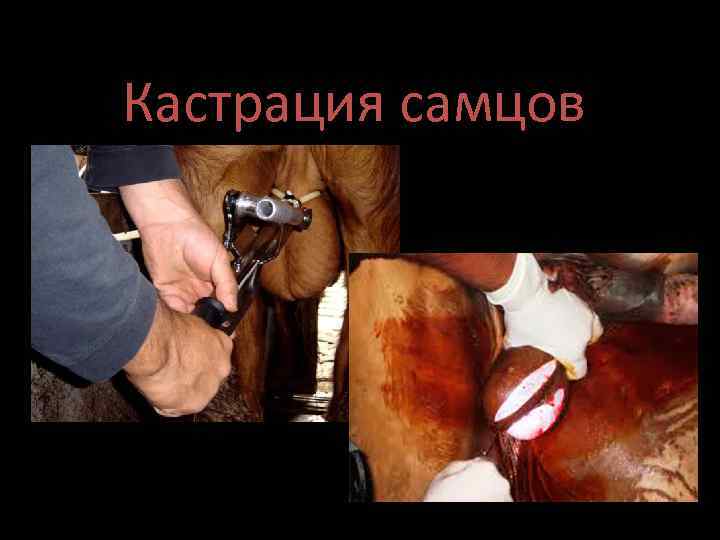
Further care of the animal
After castration, the bull should be placed in a well-cleaned pen. It is important to keep the stall clean and dry. It is strictly forbidden to place the animal on a dirty, damp bed. This will lead to complications after the intervention.
Also, do not use small sawdust, which can penetrate the damaged area. Straw bedding is best.
A veterinarian must observe the animal for several days. To prevent purulent complications, the wound should be treated several times a day. Nutrition is also important. However, food should be given in moderation.
If there are a lot of flies in the room, it is worth using insect repellent solutions. It is recommended to keep the castrated bulls separately for 2-3 weeks. To avoid infection, they should not be grazed in wetlands. Castration of bulls can be carried out in different ways. Each of them has a number of advantages and disadvantages. Before choosing a specific method, you need to analyze all the features.









